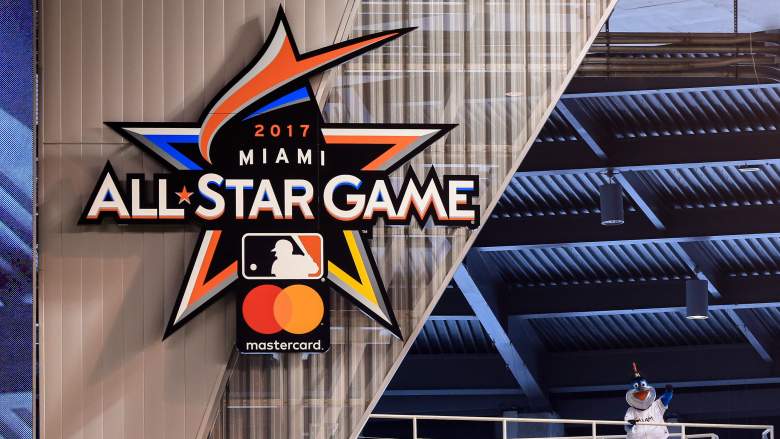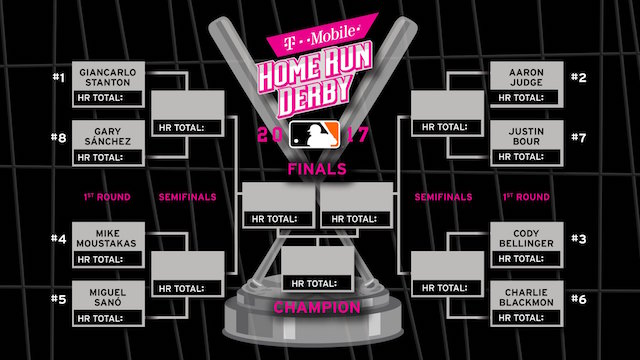
Getty A detailed view of the 2017 All-Star Game logo that was unveiled in Marlins Park.
Believe it or not, it’s already time for the Midsummer Classic and its surrounding festivities.
That means it’s also time for the spectacle that is the Home Run Derby. Eight of the league’s best sluggers are set to take to the batter’s box at Marlins Park in Miami on Monday to determine who the best home-run hitter is in the MLB.
That list includes reigning champion Giancarlo Stanton of the Marlins, rookie Aaron Judge of the New York Yankees, rookie Cody Bellinger of the Los Angeles Dodgers, Mike Moustakas of the Kansas City Royals, Miguel Sano of the Minnesota Twins, Charlie Blackmon of the Colorado Rockies, Justin Bour of the Marlins and Gary Sanchez of the Yankees.
That list makes for one of the most interesting derby fields in recent memory.
Stanton is the top dog in the competition, as he’ll be right at home in the Marlins’ stadium. He won the competition last season with 61 total homers, a new record. But he’ll face some stiff competition with the bat and power ability of Judge.
Over the weekend, Judge made Yankees history when he smashed his 30th home run this season. That broke Joe DiMaggio’s franchise record for most homers in a rookie season — and it was only July 7. The gaudy numbers make Judge as viable of a candidate to win the derby as any.
You shouldn’t count out Bellinger — or the rest of the field for that matter. Although he’s slowed down at the plate a bit recently, Bellinger hasn’t really missed a beat. He’s got a .261 average through 70 games with a .619 slugging percentage and 25 home runs.
2017 Home Run Derby Rules

The 2017 MLB Home Run Derby bracket.
The MLB seeded the hitters and paired them up in a bracket, which can be seen above.
Competitors in the derby will face a similar set of rules to the past two seasons. Each player will have four minutes to try and hit as many home runs as he can. A player can add bonus time to the clock depending on the distance of the homers hit — those who his two homers of 440 feet or more get 30 seconds to continue in the round.
Because of the exhaustion that may occur from swinging the bat that many times, a player can call one 45-second timeout to regain their strength during the first two rounds.
The two players who make it to the championship round receive two timeouts — one lasting 45 seconds and the other 30 seconds.
In the event of a tie in a round, the two players start a “swing-off” which last’s 1 minute. Whoever finishes with the most homers after that advances. If after the “swing-off” the two players are still tied, each will get three swings until the tie is broken.

